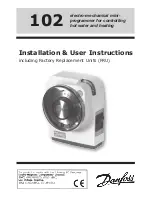
©
National Instruments Corporation
5-1
5
Straight-Line Moves
A straight-line move executes the shortest move between two points.
Position-Based Straight-Line Moves
Position-based straight-line moves use the specified target position to
generate the move trajectory. For example, if the motor is currently at
position zero, and the target position is 100, a position-based move creates
a trajectory that moves 100 counts (steps).
The controller requires the following information to move to another
position in a straight line:
•
Start position
—Current position, normally held over from a previous
move or initialized to zero
•
End position
—Also known as the target position, or where you want
to move to
•
Move constraints
—Maximum velocity, maximum acceleration,
maximum deceleration, and maximum jerk
Tip
When you are using the NI SoftMotion Controller, you can load separate acceleration
and deceleration jerk values
The motion controller uses the given information to create a trajectory that
never exceeds the move constraints and that moves an axis or axes to the
end position you specify. The controller generates the trajectory in real
time, so you can change any of the parameters while the axes are moving.
Straight-Line Move Algorithm
The straight-line move algorithm includes the following procedures:
•
Load target position
—Specifies the end position
•
Load the move constraints
—Loads the velocity, acceleration,
deceleration, and jerk values
•
Start motion
—Starts the move
















































